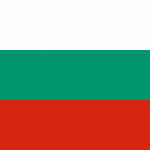Who is wanted

Every European is asked to take part in the survey and is included in the EUROPEAN-VISIONS study. For the EUROPEAN-VISIONS-exhibitions, however, one representative of the most frequently performed professional group per country will be selected per social stratum (see below). This corresponds to three people per EU country (Research source including: ec.europa.eu/eurostat).*
Wanted occupational groups by country

Bulgaria
Population: 6,951,482 (December 2019)
1.) Tailor (⏀Income: 335 € per month)
2.) Teacher (⏀ income: € 358 per month)
3.) IT expert (⏀ income: € 1,800 per month)
Total ⏀ income: 691 € per month
(Based on an assessment by Lyuben Tomev, Director of the Research Institute of the Trade Union Confederation KNSB)
- Strongest industry: retail
- Unemployment rate: 6.2%
- Bulgaria has the lowest BPI per inhabitant and one of the highest poverty rates in the EU. (As of 2009)

Estonia*
(Total 671,300 employees)
1.) Driver and operator of mobile systems (7% of all employees)
2.) Expert from business and administration (7% of all employees)
3.) Production and specialized service manager (6% of all employees)
(Source: http://andmebaas.stat.ee, status: 2019)

France*
(All in all approx. 25,650,000 employees)
1.) Miner of non-ferrous metals (3% of all employees)
2.) Specialist in retail (3% of all employees)
3.) Manager in the wholesale of machines for the textile industry as well as sewing and knitting machines (0.3% of all employees)
(Source: https://www.insee.fr, status: 2015)
Répondre au questionnaire:

Germany*
(Total 33,938,159 employees)
1.) Specialist for warehouse management (4% of all employees)
2.) Office worker (6% of all employees)
3.) Occupation a.d. University apprenticeship /research (0.7% of all employees)
(Source: Statistics from the Federal Employment Agency, status: September 30, 2019)
Fragebogen beantworten:
*Data to be updated, work in progress.
The statistics I have looked at up to now on the most common occupations in the various countries were not very meaningful or comparable and therefore only rarely applicable to my specific question regarding the social strata distribution in the respective countries. Since the social stratum can be differentiated in different countries, it seems to me more appropriate to ask representatives of the respective countries regarding the assignment of which type of professional groups are representative of the different classes. In order not to overdetermine this whole aspect, I use income as a criterion.